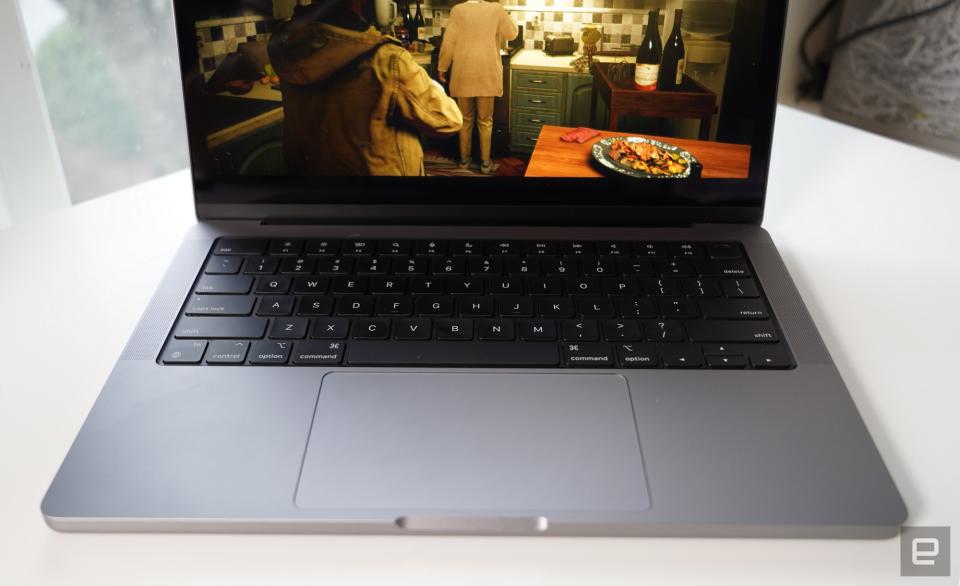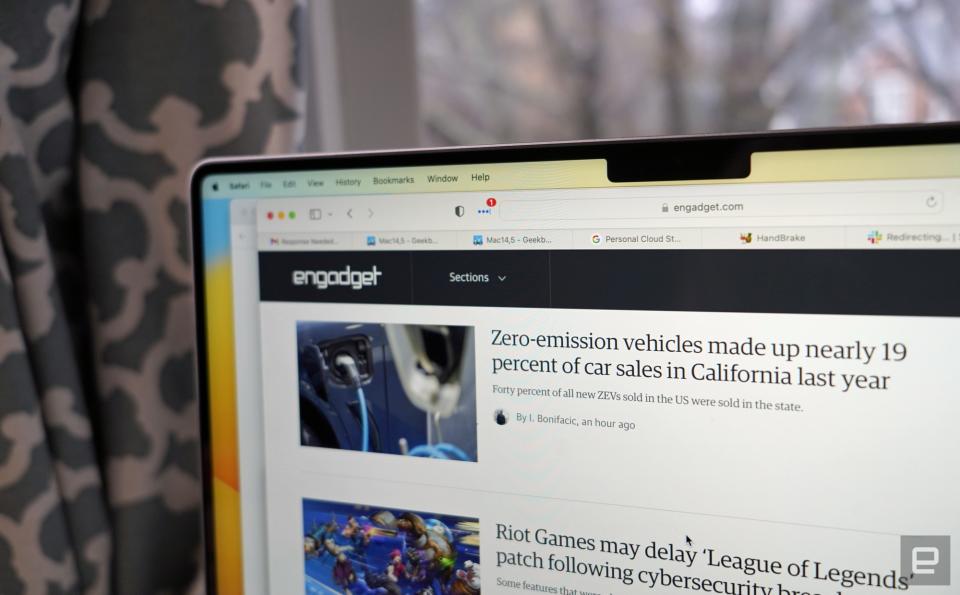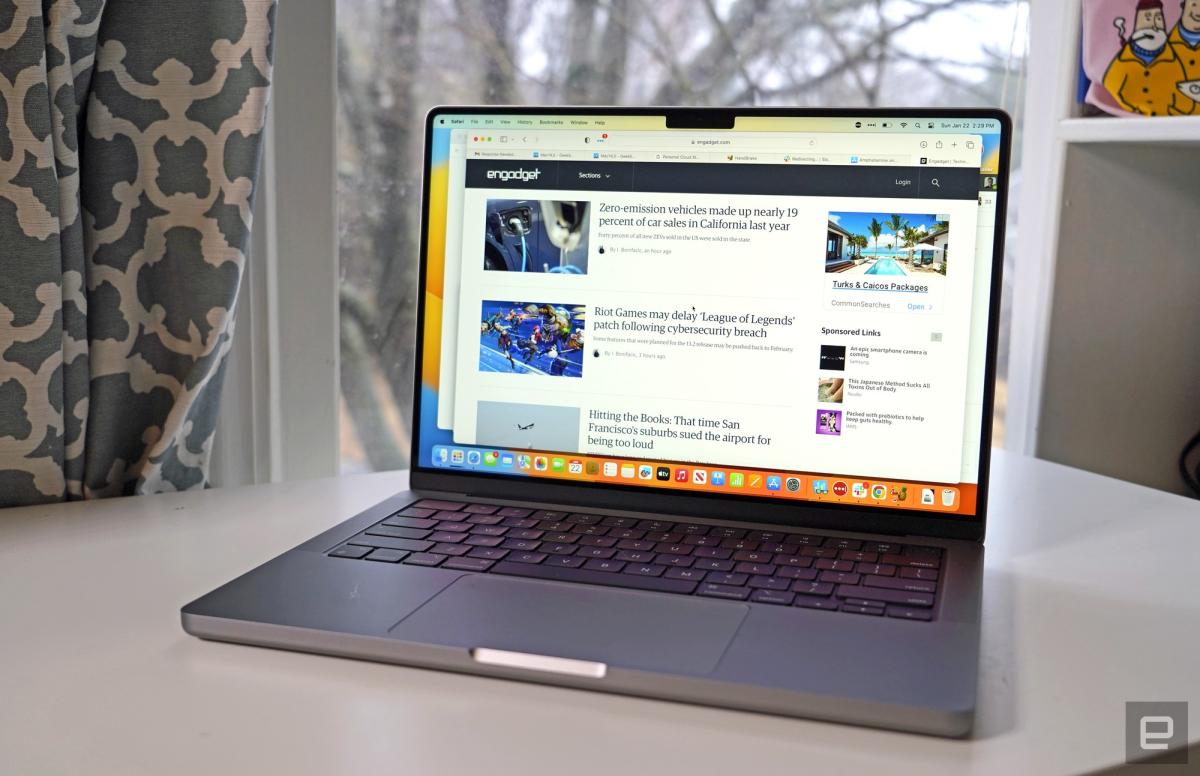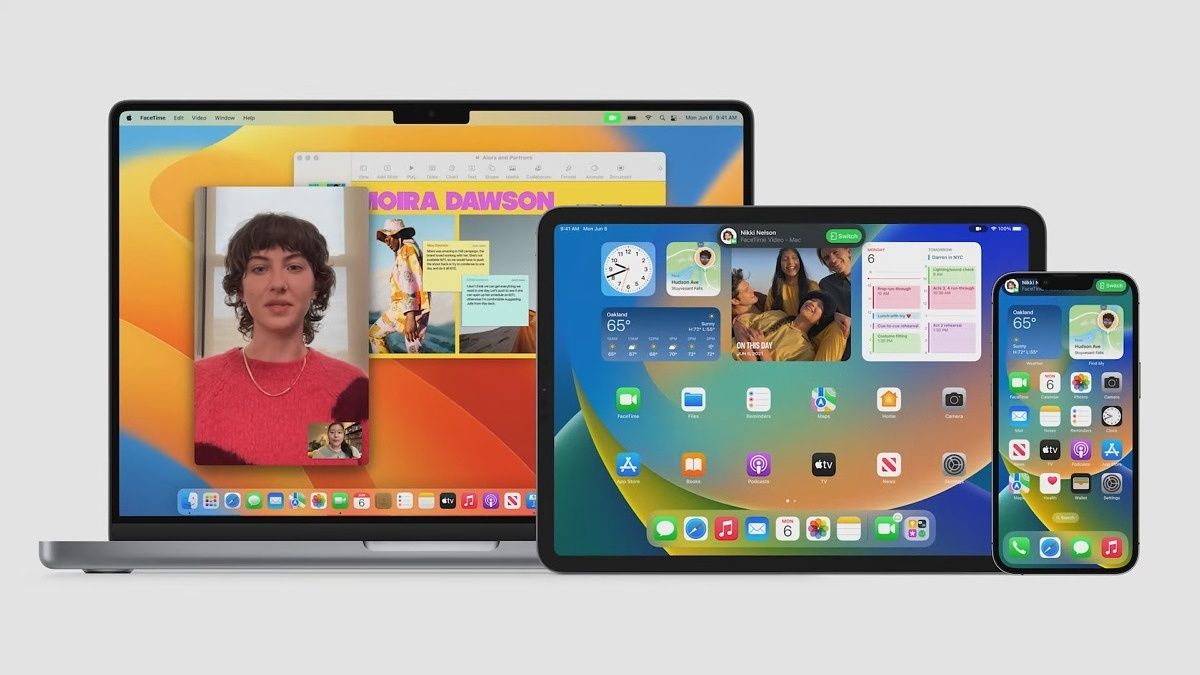With its latest batch of MacBook Pros, Apple gave its more demanding fans everything they wanted: tons of ports, tons of power, and really good screens. As usual, the company follows up the major redesign with a simple chip upgrade, with the new M2 Pro and M2 Max. They’re faster, as you’d expect, but they also deliver some features that power users might appreciate, like 8K video output and support for WiFi 6E.
Once Apple locks in a redesign, it usually doesn’t mess with a good thing (except for complete disasters like the trashed Mac Pro). So it’s no surprise to see that this year’s MacBook Pro 14 looks no different than the 2021 model. It still has a gorgeous 14.2-inch Liquid Retina XDR display with ProMotion support and a prominent notch with a 1080p webcam. It has all the ports you’d actually want, including a MagSafe power connector, three Thunderbolt 4 USB-C ports, HDMI, a headphone jack, and a full-size SD card slot. And the overall shape of the computer remains relatively flat, an evolution of the long-lived unibody MacBook Pro design.
1 / 11
Under the hood, however, the MacBook Pro 14 has been dramatically upgraded. It can be equipped with Apple’s new M2 Pro chip, which offers up to a 12-core CPU and 19-core GPU, or the M2 Max, which squeezes in a 12-core CPU and 38-core GPU. Much like Intel’s new hybrid processors, as well as mobile chips from Qualcomm, Apple relies on a combination of core speeds for its processors (the 12-core chips, for example, have eight performance cores and four efficiency cores). The previous M1 Pro and M1 Max topped out with 10 CPU cores and 16 or 32 GPU cores respectively.

Apple claims the M2 Pro is about 20 percent faster than its predecessor in CPU speeds and up to 30 percent faster when it comes to graphics. At the same time, the M2 Max is up to 30 percent faster than the M1 Max when it comes to graphics. We tested the fully upgraded $3,299 MacBook Pro, which was equipped with the M2 Max chip with 38 GPU cores and 64GB of RAM. It scored about 2,600 points (19 percent) faster in the GeekBench 5 multitasking CPU benchmark, compared to the M1 Max-equipped MacBook Pro 16. It was also 18 percent faster in the GPU-powered GeekBench 5 Compute test and a whopping 60 percent faster than the M1 Max Mac Studio in the 3DMark Wildlife Extreme benchmark.
|
No |
Geekbench 5 CPU |
Geekbench 5 Compute |
Cinebench R23 |
3DMark Wildlife Extreme |
|---|---|---|---|---|
|
Apple MacBook Pro 14-inch (Apple M2 Max, 2023) |
1,970/15,338 |
71,583 |
1,603/14,725 |
18,487 |
|
Apple MacBook Pro 13-inch, (Apple M2, 2022) |
1.938/8.984 |
27,304 |
1,583/8,719 |
6,767 |
|
Apple MacBook Pro 14-inch (Apple M1 Pro) |
1,767/11,777 |
38,359 |
1,515/12,118 |
N/A |
|
Apple MacBook Pro 16-inch (Apple M1 Max, 2021) |
1,783/12,693 |
60,167 |
1,524/12,281 |
N/A |
|
Apple Mac Studio (Apple M1 Ultra) |
1.785/23.942 |
85,800 |
1,537/24,078 |
10,020 |
These are phenomenal results if you plan to use the MacBook Pro to its full potential. But I’ll admit that in daily use I didn’t notice any major performance gains over the previous models. That’s not really a knock on the new computer, it’s more a testament to how much Apple got right last time. Unlike PCs, you probably won’t be playing too much with your Mac either, so there’s less reason to chase frequent upgrades. That said, it’s nice to see some modern games with native Mac support. Resident Evil Village easily reaches 60fps on the MacBook Pro at full resolution, but I wouldn’t be surprised if the same was true for the M1 models.

If you’re among those who handle heavy video encoding or high-computation jobs on a daily basis, however, it might be worth stepping up from the latest MacBook Pro. It took me 31 seconds to transcode a minute-long 4K clip to 1080p with Handbrake – but the M1 Max MacBook Pro 16 took a full 10 seconds longer. Extrapolate that to longer jobs and you can seriously save some time. And if you’ve managed to stick with an Intel MBP until now, it’s definitely time to upgrade — you’ll easily see a night and day difference in speed.
Performance aside, the MacBook Pro 14 is still a wonderful workhorse to live with. The MiniLED Liquid Retina display looks amazingly bright, especially when viewing HDR content. But mostly, I appreciated the smooth scrolling thanks to Apple’s 120Hz ProMotion refresh rate. The six-speaker sound system is still excellent, with crisp and powerful sound that’s leagues ahead of most other laptops. And I’m still impressed with the MacBook Pro’s built-in three-microphone array. It’s no replacement for a dedicated USB microphone, but it sounds great during video calls.

The MacBook Pro’s keyboard is certainly better than the old butterfly models, but I wish Apple could deliver more key travel. It’s still good to type on, to be clear, I just feel a little spoiled by the mechanical keyboards I’ve seen in some gaming laptops. The Pro’s trackpad is still best in class, with a large surface area and responsive performance. After testing the XPS 13 Plus last year, which featured an attractive but difficult-to-use trackpad hidden in the palm rest, I’m even more grateful for Apple’s clean design. It turns out that being able to feel the difference between the trackpad and the wrist rest is pretty helpful!
Apple cites better battery life as another big benefit of the M2 Pro and Max chips, and I definitely noticed an improvement. The previous MacBook Pro lasted 12 hours and 36 minutes in our tests, but the new model managed 15 hours and 10 minutes. That’s a healthy step up, especially if you end up on a long flight without any working outlets. Apple says the new MacBook Pros can reach up to 22 hours of battery life, but note that figure only refers to the 16-inch model.

Just like last time, the 14-inch MacBook Pro starts at $1,999 — a big step up from the $1,299 13-inch model. I’m still a little confused about that MacBook Pro. Most casual shoppers would be better off with the revamped M2 MacBook Air, while power users might just as well come across this more powerful 14-inch model. If you’re aiming for something bigger, the 16-inch MacBook Pro starts at $2,499. New equipment also means the old models will inevitably sell, so it’s worth keeping an eye on the M1 Pro and Max machines if you’re aiming to save some money. Sure, they’re a bit slower, but you can spend the extra money on buying more RAM or storage.
It’s no wonder Apple launched the new MacBook Pros without much fanfare. It’s just a simple spec bump, not the sort of thing most buyers would get too excited about. But for those creative professionals who need as much power as possible, it’s another reason to stick with Apple instead of jumping to a PC.
#MacBook #Pro #14inch #review #boon #creatives




